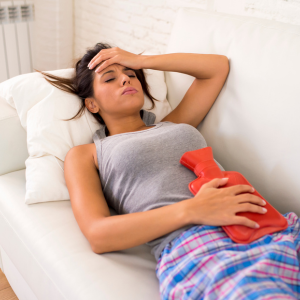PMS and PMDD: Shedding Light on Hidden Struggles
Premenstrual Syndrome (PMS) and Premenstrual Dysphoric Disorder (PMDD) are two conditions that affect countless women during their menstrual cycles. While these conditions may share some symptoms, they are distinct in their impact and severity. It’s crucial to recognize the differences and explore the avenues for support and treatment for those experiencing these challenges.
Symptoms of PMS:
PMS typically encompasses a range of emotional, physical, and behavioural symptoms that occur in the days leading up to menstruation. Common PMS symptoms include:
– Mood swings
– Irritability
– Fatigue
– Bloating
– Breast tenderness
– Food cravings
– Headaches
Symptoms of PMDD:
PMDD, on the other hand, is an extreme form of PMS with severe symptoms that can be profoundly disruptive. Some PMDD symptoms include:
– Overwhelming sadness, including suicidality
– Severe mood swings
– Anxiety and panic attacks
– Intense irritability
– Physical symptoms, like joint and muscle pain
The Impact and Struggle
PMS and PMDD can significantly affect a woman’s quality of life. While PMS symptoms are often manageable, PMDD can be incapacitating, leading to missed work, strained relationships, and even depression. It’s not just a ‘bad mood’—it’s a medical condition that requires attention and support.
Statistics and Diagnosis
Approximately 75% of menstruating women experience some form of PMS. However, PMDD is less common, affecting about 3-8% of women. Despite its prevalence, many women face challenges in obtaining a diagnosis due to a lack of awareness, dismissal of their symptoms, or the normalisation of menstrual discomfort.
Support and Treatment
It’s crucial to acknowledge the existence of PMS and PMDD and to seek help when needed. Motherwell’s Women’s Health drop-ins offer a safe haven for sharing experiences and providing valuable information. These platforms can guide women toward diagnosis and treatment options.
Treatment for PMS and PMDD may involve lifestyle changes, dietary modifications, exercise, or medications. Consultation with a healthcare professional is essential to determine the most effective approach for each individual.
In Conclusion
PMS and PMDD are real and impactful conditions, but you don’t have to suffer in silence. Understanding the symptoms, seeking support, and exploring treatment options are vital steps toward reclaiming your life and well-being.
Women’s health and wellbeing charities, like Motherwell, are here to provide guidance and support, breaking down the barriers that hinder access to diagnosis and treatment. Together, we can empower women to face PMS and PMDD with resilience, support, and understanding.
